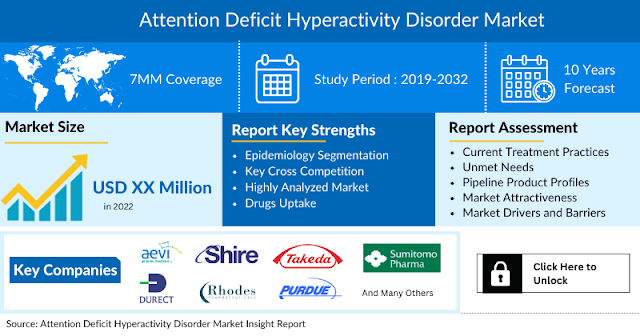Exploring Rare Disease Markets: A Comprehensive Analysis
In the realm of medical science, rare diseases often present unique challenges due to their low prevalence and limited understanding. However, advancements in research and technology have paved the way for targeted treatments and improved outcomes for patients battling these conditions. In this article, we delve into the markets of several rare diseases, shedding light on their prevalence, treatment landscape, and emerging therapies.
Short Bowel Syndrome (SBS) is a rare disorder characterized
by the inadequate functioning of the small intestine, leading to malabsorption
of nutrients and fluids. This condition often results from surgical removal of
a significant portion of the small intestine. The market for SBS therapies has
witnessed steady growth, driven by the introduction of novel treatments such as
bowel lengthening procedures and innovative nutritional therapies.
Additionally, ongoing research into intestinal transplantation and stem cell
therapies holds promise for further advancements in the field.
Complement 3 Glomerulopathy (C3G) is a rare renal disorder
characterized by abnormal activation of the complement system, leading to glomerular
damage and kidney dysfunction. Despite being a relatively rare condition, the
C3G market has garnered attention from pharmaceutical companies due to the
unmet medical need and potential for targeted therapies. Recent developments in
complement-targeted drugs have shown promise in halting disease progression and
preserving renal function in C3G patients.
Retinitis Pigmentosa (RP) is a group of inherited retinal
disorders characterized by progressive degeneration of photoreceptor cells,
leading to vision loss and eventual blindness. The RP market has witnessed
significant advancements in recent years, with gene therapy emerging as a
promising treatment approach. Innovative gene-editing techniques and viral
vector delivery systems have shown encouraging results in clinical trials,
offering hope for restoring vision in RP patients.
Aplastic Anemia is a rare bone marrow failure disorder
characterized by the inability of the bone marrow to produce an adequate number
of blood cells. Despite its rarity, Aplastic Anemia poses significant
challenges due to its life-threatening complications such as severe anemia and
increased risk of infections. The market for Aplastic Anemia therapies has seen
notable progress with the introduction of immunosuppressive drugs and
hematopoietic stem cell transplantation as standard treatment modalities.
Ongoing research focuses on improving transplant outcomes and developing novel
immunomodulatory agents to address the underlying immune dysregulation in
Aplastic Anemia.
Nephrotic Syndrome is a rare kidney disorder characterized
by the presence of proteinuria, hypoalbuminemia, edema, and hyperlipidemia.
While the exact cause of Nephrotic Syndrome varies, immune-mediated mechanisms
often play a significant role in its pathogenesis. The market for Nephrotic
Syndrome therapies has witnessed advancements in targeted immunosuppressive
agents and renoprotective strategies aimed at preserving kidney function and
reducing proteinuria. Emerging therapies targeting specific pathways involved
in podocyte injury hold promise for improving outcomes in Nephrotic Syndrome
patients.
Pulmonary Arterial Hypertension (PAH) is a rare and
progressive disorder characterized by elevated blood pressure in the pulmonary
arteries, leading to right heart failure and ultimately death if left
untreated. Despite recent advancements in treatment, PAH remains a challenging
condition with limited therapeutic options. The market for PAH therapies has
seen the development of targeted vasodilators, endothelin receptor antagonists,
and prostacyclin analogs aimed at improving pulmonary hemodynamics and
alleviating symptoms. Ongoing research focuses on identifying novel molecular
targets and combination therapies to address the multifactorial nature of PAH
pathogenesis.
Hemophilia A is a rare genetic bleeding disorder caused by
deficient or defective Factor VIII, a blood clotting protein. Despite being a
well-known condition, Hemophilia A continues to pose significant challenges in
management due to the risk of spontaneous bleeding and long-term complications
such as joint damage. The market for Hemophilia A therapies has seen remarkable
advancements with the advent of extended half-life Factor VIII concentrates and
gene therapy approaches aimed at achieving sustained clotting factor
expression. Emerging technologies such as RNA interference hold promise for
further improving outcomes and reducing the treatment burden for Hemophilia A
patients.
Complicated Urinary Tract Infections (cUTIs) represent a
spectrum of infections involving the urinary tract and surrounding structures,
often complicated by factors such as urinary catheterization or underlying
comorbidities. The market for cUTI therapies has witnessed a shift towards targeted
antimicrobial agents and combination therapies to address the rising prevalence
of multidrug-resistant pathogens. Additionally, novel approaches such as
biofilm-disrupting agents and host-directed therapies show potential in
overcoming treatment challenges associated with recurrent and persistent cUTIs.
In conclusion, the markets for rare diseases present both challenges and opportunities for innovation in medical science. With concerted efforts from researchers, healthcare providers, and pharmaceutical companies, significant strides have been made in understanding these conditions and developing effective treatments. As we continue to unravel the complexities of rare diseases, collaborative efforts and investment in research hold the key to improving outcomes and quality of life for patients worldwide.


Comments
Post a Comment